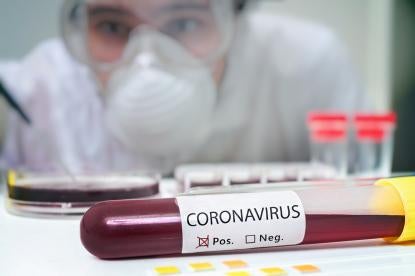The COVID-19 pandemic presents unprecedented challenges for any employer seeking to provide a healthy working environment. To help mitigate some of the uncertainty, on March 18, 2020, the EEOC issued updated guidance for employers considering screening and testing protocols for employees and job applicants. These efforts, along with a growing patchwork of state and local laws, are intended to slow the spread of infections. The EEOC guidance explains what precautionary measures are now permissible under the Americans with Disabilities Act (ADA), including:
How much information may an employer request from an employee who calls in sick, in order to protect the rest of its workforce during the COVID-19 pandemic?
EEOC: During a pandemic, ADA-covered employers may ask such employees if they are experiencing symptoms of the pandemic virus. For COVID-19, these include symptoms such as fever, chills, cough, shortness of breath or sore throat. Employers must maintain all information about employee illness as a confidential medical record in compliance with the ADA.
When may an ADA-covered employer take the body temperature of employees during the COVID-19 pandemic?
EEOC: Generally, measuring an employee’s body temperature is a medical examination. Because the Centers for Disease Control and Prevention (CDC) and state/local health authorities have acknowledged community spread of COVID-19 and issued attendant precautions, employers may measure employees’ body temperature. However, employers should be aware that some people with COVID-19 do not have a fever.
Does the ADA allow employers to require employees to stay home if they have symptoms of COVID-19?
EEOC: Yes. The CDC states that employees who become ill with symptoms of COVID-19 should leave the workplace. The ADA does not interfere with employers following this advice.
When employees return to work, does the ADA allow employers to require doctors' notes certifying their fitness for duty?
EEOC: Yes. Such inquiries are permitted under the ADA either because they would not be disability-related or, if the pandemic influenza were truly severe, they would be justified under the ADA standards for disability-related inquiries of employees. As a practical matter, however, doctors and other health care professionals may be too busy during and immediately after a pandemic outbreak to provide fitness-for-duty documentation. Therefore, new approaches may be necessary, such as reliance on local clinics to provide a form, a stamp or an email to certify that an individual does not have the pandemic virus.
Several state and local authorities have also issued recommendations. Ohio Governor Mike DeWine, for example, requested — but did not mandate — that all Ohio employers take employees’ temperatures before they start work each day. Santa Clara County, California, has released public health recommendations specifying that employers should immediately “ensure employees who are sick do not come to work.” These recommendations were based, in part, on guidance from the CDC which suggested regular health checks (temperature and respiratory symptom screening) of all staff and building visitors. The CDC provided similar guidance to King County, Washington, which has implemented several of the interventions the CDC suggested but has not yet recommended employers initiate any testing protocols. Additionally, existing laws in certain jurisdictions may already include requirements employers must follow when taking employee temperatures. Employers that are subject to the California Consumer Privacy Act, for example, must first provide employees with a statutory notice before commencing any testing, if they have not previously provided a sufficient disclosure.
While these COVID-19 issues evolve hour-by-hour, below are some other questions we have received
If an employer implements a testing protocol, who should administer the tests?
Ideally, any tests would be administered by medical professionals. HR or environmental health and safety professionals, though, are potential alternatives.
May an employer require employees to self-report their own temperatures and those of their immediate family members as a condition of returning to work?
Employers may reasonably rely on employee self-reporting but may still opt to interview employees and observe them for any symptoms associated with the virus.
Is there a threshold temperature at which an employee should be sent home?
According to the CDC, individuals with body temperatures of 100.4 degrees or higher should isolate themselves from others.
How long should an employer wait before returning an employee to work after the employee has tested above the threshold temperature?
Some employers have held off on returning affected employees to work until they have passed a 14-day self-quarantine period without exhibiting symptoms. Others may require a doctor’s release or a documented negative COVID-19 test.
Should employees paid on an hourly basis clock in before submitting to testing?
A best practice would be to perform any tests while an employee is on the clock.
How may an employer avoid creating logjams of employees congregating together as they line up for testing?
For large plant-like environments, employers may consider a “drive-through” approach similar to the public testing centers being set-up at retail locations. This may not be feasible in an office building setting, which could necessitate a staged entry approach or additional direction to maintain adequate line spacing.
Should an employer test all employee groups, or is it permissible to test only some?
It may be defensible to test only those employees that pose a higher risk, but it is important to be consistent and to document the basis for any such decision.
How will the process be kept confidential?
Testing protocols that permit employees to discern the results received by their coworkers should likely be avoided.
If an employee is sent home, is the employer required continue to pay the employee during the absence?
On March 18, 2020, the President signed the Families First Coronavirus Response Act, which contains paid leave provisions applicable to certain employers. Information regarding the FFCRA may be found here. Even if the FFCRA does not apply, an employer may be subject to a state statute or municipal ordinance that provides for paid sick leave.
What records from the testing or screening protocol should an employer retain?
Employee medical records should be treated as part of the company’s confidential medical files and retained per any applicable regulatory requirements. Retaining all testing records would likely necessitate more administrative paperwork, but these records could be needed if an employee later alleges discriminatory exclusion from work due to some protected status (e.g., disability, age, race, sex, etc.).






 i
i

